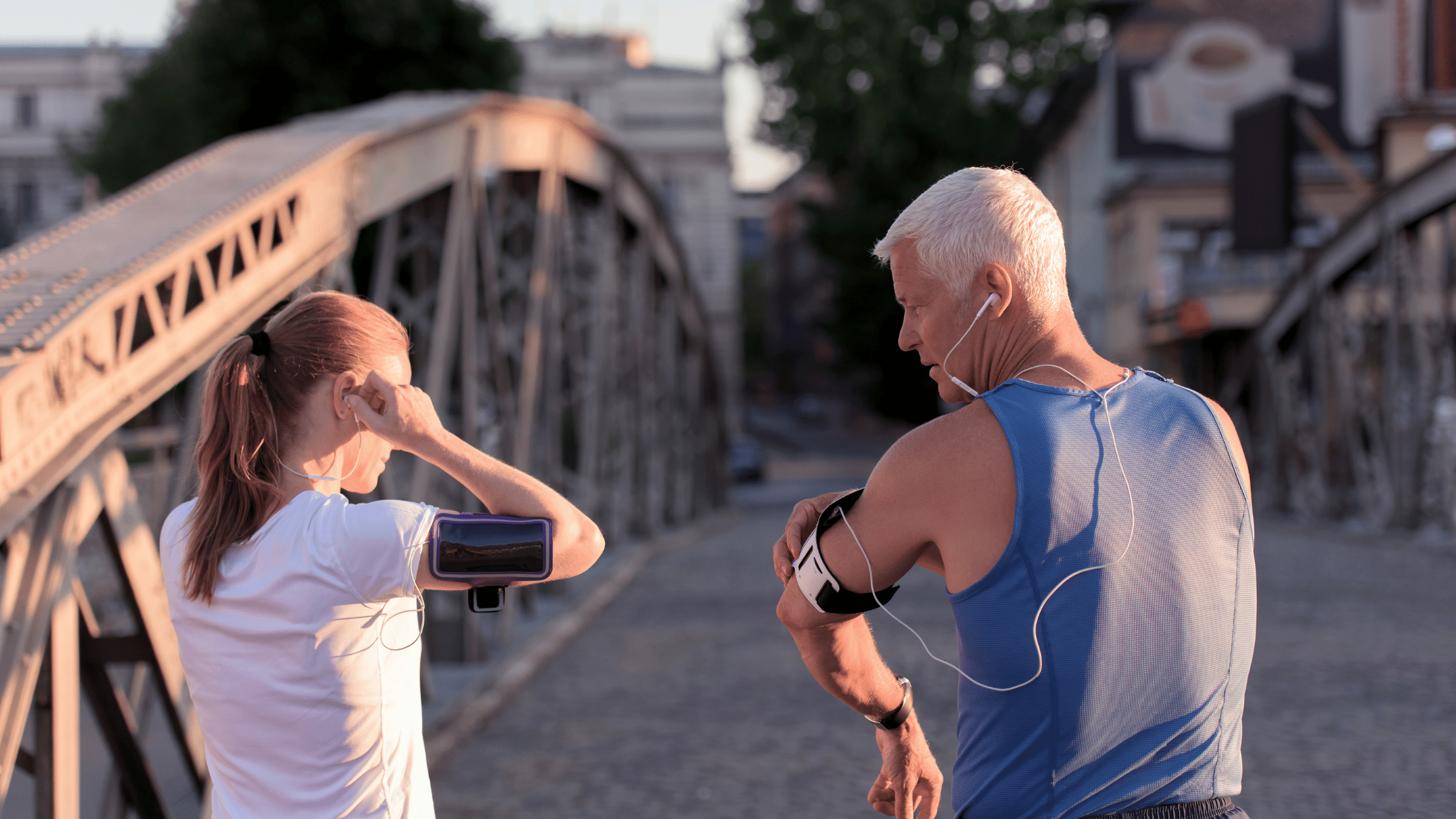Running Warm Up: How and Why You should not skip it!
Let's talk about something that a lot of runner's take lightly:
Doing a warm up before you run!
Contrary to popular belief there is no scientific evidence that warming up before a run will actually reduce the risk of a running injury.
Does this mean that we should skip it all together?
No!
Although the link is missing there are still some extremely important benefits that are derived from warming up and cannot be ignored.
Related: How to Warm Up and Cool Down when Running
7 benefits to warming up before a run:
1. Warming up increases the blood flow to the muscles that are active.
It gets the blood pumping!
With limited or stagnant blood flow we aren’t going to go anywhere fast, we are going to feel sluggish and our muscles are not going to want to work in our favor.
2. It increases our core temperature and muscle temperature
This seems to be one of the most important benefits to warming up as this increase in body temperature promotes the release of oxygen (via the Bohr Effect).
Since running is an aerobic sport (meaning oxygen is needed) this is a necessary component.
3. it allows for greater muscle contraction and relaxation
This in turn releases calcium into the muscles.
Again, this is another essential component of exercise since without the release of calcium, our muscles will have a limited ability to contract and relax.
That means we won't be able to run as far and as fast as we might like and the first couple of minutes to miles might feel miserable.
4. the transition from resting to exercise will be more effective

Warming up before a run means that your body will transition much more quickly from resting to running by increasing the metabolic reactions and allowing it to be a gradual process.
Don’t expect to be able to go out and run a fast mile or four after just having finished a sitting spree.
You need to give your body that time to adjust.
5. it reduces stiffness in our joints
It lowers the viscosity (or stiffness) in joints which will promote a greater range of motion, fluidity and less friction while running.
6. increases your heart rate and blood pressure
Increasing your heart rate and blood pressure before running, instead of while first beginning to run, leads to vasodilation that is the blood vessels will dilate to allow more blood to pass through.
Once again it gets the blood pumping and us moving!
In fact, especially if you have a history or family history of blood pressure disorders or heart disease this can be extremely important for you as it can be dangerous to jump into a vigorous activity such as running without first slowly increasing our heart rate and blood pressure.
7. gives us the needed mental prep
Perhaps the most necessary reason to warm up as a runner – it gives us the often times much needed mental preparation.
A lot of exercise requires us being in “the mood” and so the warm up process will help you focus on the workout you are about to do and get your head in the game.
How to Warm Up Properly as a runner

When one thinks of a warming-up they often picture a runner on the sidelines stretching it out.
However there is a lot more thought that goes into creating an effective warm-up plan.
The structured warm up consists
- a General Phase and
- a Specific Phase
The general warm-up
The general warm up is used to fulfill the 7 benefits of performing a warm-up before a run.
Basically, we want to get that blood pumping and our muscles nice and warm and ready to move!
What we do not want to do is to reduce our energy reserves and cause fatigue.
This should be energizing not energy zapping!
how long should the general warm up last?
This general warm-up phase should last anywhere from 5-10 minutes.
It should consist of repetitive, low intensity movements.
Some examples of repetitive movements that would be good during a general warm- up are:
- Walking,
- light jogging,
- slow jumping jacks,
The idea is to just move and since we will be using our legs we want to do something that will increase blood flow to our lower extremities.
NOTE:
Keep this phase to 10 minutes or less as the beneficial effects will begin to plateau any longer than this.
A lot of runners just like to keep their general warm-ups to a light jog.
If you are looking for something different here are a few ideas.
- Walking
- Jumping Jacks
- Slow Jump Rope
- Skipping
- High Knee Lifts
The specific warm-up
The specific warm up consists of doing movements that are,
like the name suggests, specific to running.
The most obvious is to just do a light jog or walk.
Many runners will run for 5-10 minutes or use the first mile of their run as their warm up.
Here is where you may feel the urge to include some stretching.
However be warned. You only want to participate in active dynamic stretching vs. static stretching.
Running Warm Up with Dynamic stretches
STEP 1. Light Cardio (2–3 minutes)
To get your heart rate up and blood flowing:
- Jog in place or do a light jog around the block (1–3 mins)
- Add in a few high knees and butt kicks toward the end
STEP 2. Dynamic Stretching & Mobility (6–8 minutes)
Leg Swings (30 sec each leg, front-to-back and side-to-side) - Great for loosening up the hips, hamstrings, and glutes
- Hold onto a wall or pole
- Swing one leg forward and back
- Then switch to side-to-side swings
Walking Lunges with Arm Reach (10 reps each leg) - Opens up hips and stretches quads, glutes, and core
- Lunge forward
- Raise arms overhead and reach up and slightly back
High Knees Pull (10 reps each leg) - Opens up hips and stretches quads, glutes, and core
- Pull one knee toward your chest while standing tall
- Alternate legs as you walk forward
High Knees Pull (10 reps each leg) - Stretches glutes and improves hip mobility
- Pull one knee toward your chest while standing tall
- Alternate legs as you walk forward
Butt Kicks (20–30 seconds)- Warms up hamstrings and increases stride frequency
- Jog in place, kicking heels up to touch your glutes
Toy Soldiers (Frankenstein Walks) (10 reps each leg) Stretches hamstrings dynamically
- Keep legs straight and swing each leg up toward the opposite hand
Hip Circles (10 each direction) Activates stabilizers and opens hips
- Stand on one leg, lift the other knee, and make circular motions
STEP 3. Strides (Optional but helpful for speed sessions) - These prep your nervous system for running faster and smoother
Do 3–4 strides of 50–75 meters at 60–80% of your max effort
In Conclusion:
Don't skip the warm-up in your eagerness to get your run in the bag.
Your warm-up becomes even more important when you are getting ready to do a speed workout or hill repeats!
And it really only needs to take about 5 to 10 minutes!
The benefits outweigh any amount of time that you think you don't have to warm up!
Related Pages:
👋Sign up to receive the free printable strength exercises for runners: 👇
 |
As featured on:










New! Comments
Have your say about what you just read! Leave me a comment in the box below.